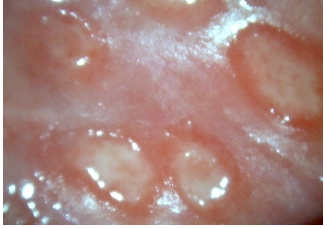Check out today’s Step 2 CK Qmax Question Challenge.
Know the answer? Post it in the comments below! Don’t forget to check back for an update with the correct answer and explanation (we’ll post it in the comments section below).
A 63-year-old man presents to his physician because of low back pain and one episode of gross hematuria. He has had lower back pain, described as a dull ache just to the left of his spine, for 1 month. The pain is constant and does not radiate. He has no history of nephrolithiasis or back trauma. His temperature is 36.4°C (97.6°F) and heart rate is 68 beats/min. His abdomen is soft and nontender. He has no costovertebral angle tenderness and is able to lie on the examining table comfortably for the duration of the examination. A urine sample is noted to contain gross mucus. A plain film of the kidney and bladder shows no calcifications or other abnormalities. An ultrasound image of the kidneys and bladder shows a hypoechoic mass containing more focal hyperechoic structures located at the dome of bladder. The mass arises from the anterosuperior surface of the bladder in the midline, and is 4-6 cm in diameter. CT confirms the presence of this lesion, but does not show any extension outside of the bladder or any regional lymphadenopathy. A biopsy of the lesion is read as adenocarcinoma.
Which of the following is most likely structure of origin?
A. Lung
B. Prostate
C. Trigone of the bladder
D. Urachus
E. Ureter
———————–
Want to know the ‘bottom line?’ Purchase a USMLE-Rx Subscription and get many more features, more questions, and passages from First Aid, including images, references, and other facts relevant to this question.
This practice question is an actual question from the USMLE-Rx Step 2 CK test bank. Get more Step 2 CK study help at USMLE-Rx.com.




B
d
urachus
D
C. Trigone of the bladder
d.
The correct answer is D. The case describes an urachal adenocarcinoma. The median umbilical ligament of the bladder persists as a remnant of the obliterated urachus. Urachal adenocarcinomas make up a small percentage of bladder cancers and about 20%-40% of primary bladder adenocarcinomas. The location of the lesion involving the bladder dome suggests that it arises from the urachus. When this information is coupled with the pathology, the diagnosis is confirmed. The most common carcinoma of the urachus is adenocarcinoma (85%). The lesion is more common in men, and usually presents in the fifth to seventh decades of life. In younger patients, sarcomas are the most common urachal neoplasm. A urinalysis that shows abundant mucus in the urine produced by mucin-producing tumor cells is almost pathognomonic for adenocarcinoma of the urachus.
A is not correct. Lung cancer can be classified as adenocarcinoma, but this is not the likely source. There is no suspicion of lung cancer, and thus a metastatic lesion is low on the differential.
B is not correct. Cancer of the prostate in this age group is most commonly adenocarcinoma. It is possible that prostate cancer may spread to the bladder, but this is unlikely in this case, given the location of the tumor. Prostate cancer with direct extension to the bladder is less likely than urachal neoplasm.
C is not correct. The trigone is the triangular-shaped area of the bladder that is bounded superolaterally by the ureteral orifices and inferiorly by the internal urethral orifice. Although this is an anatomic part of the bladder, it should not be confused with the urachus, which is located at the dome of the bladder. Thus, when describing the anatomic location of the lesion, urachus is more accurate. In addition to the anatomic clues, the association of adenocarcinoma is more often with the urachus and not the trigone of the bladder. Approximately 90% of urachal carcinomas invade the bladder, but invasion is not likely to occur in the area of the trigone.
E is not correct. The ureters do not insert to the location that is described and no ureteral anomalies are noted on CT. Furthermore, adenocarcinoma of the ureter is uncommon.